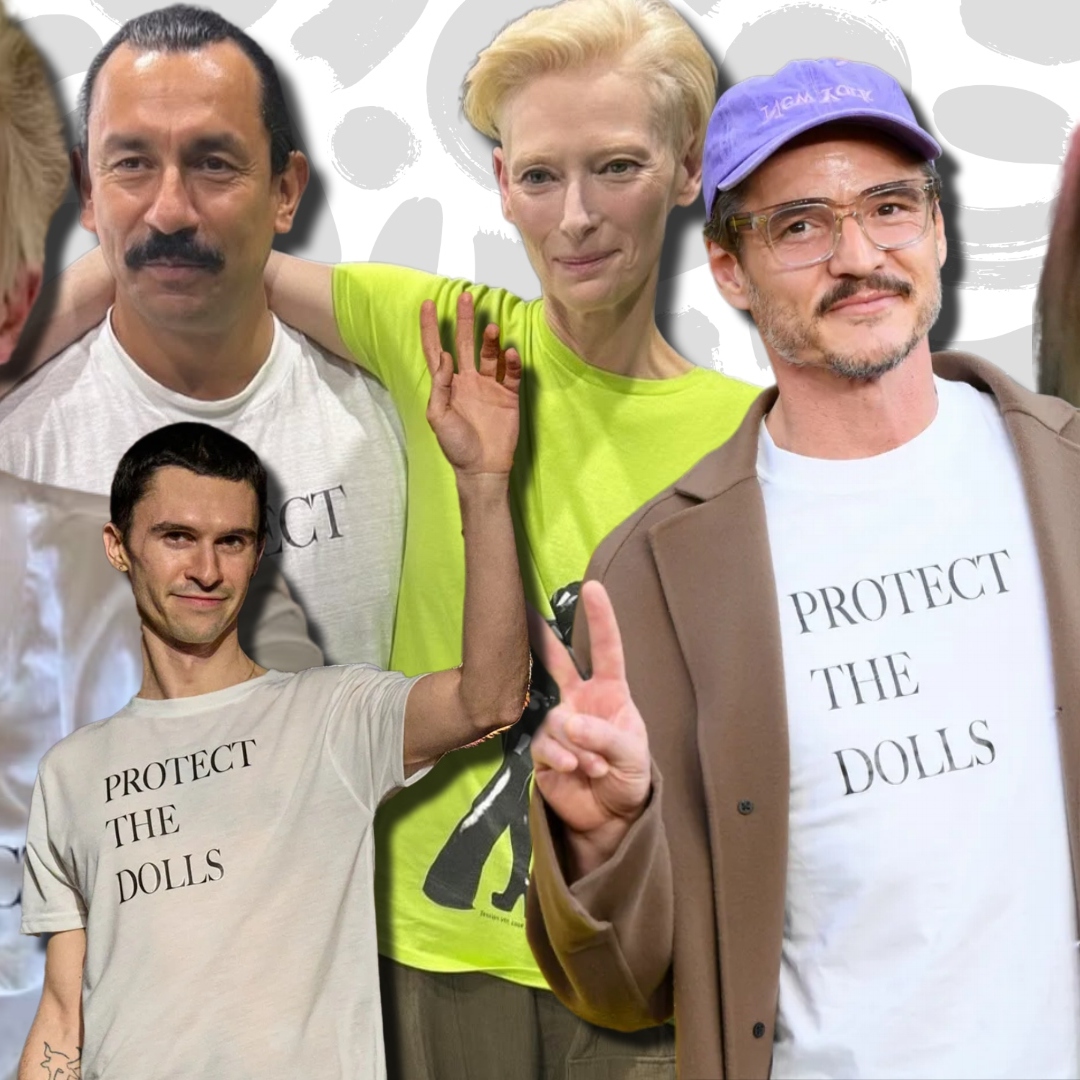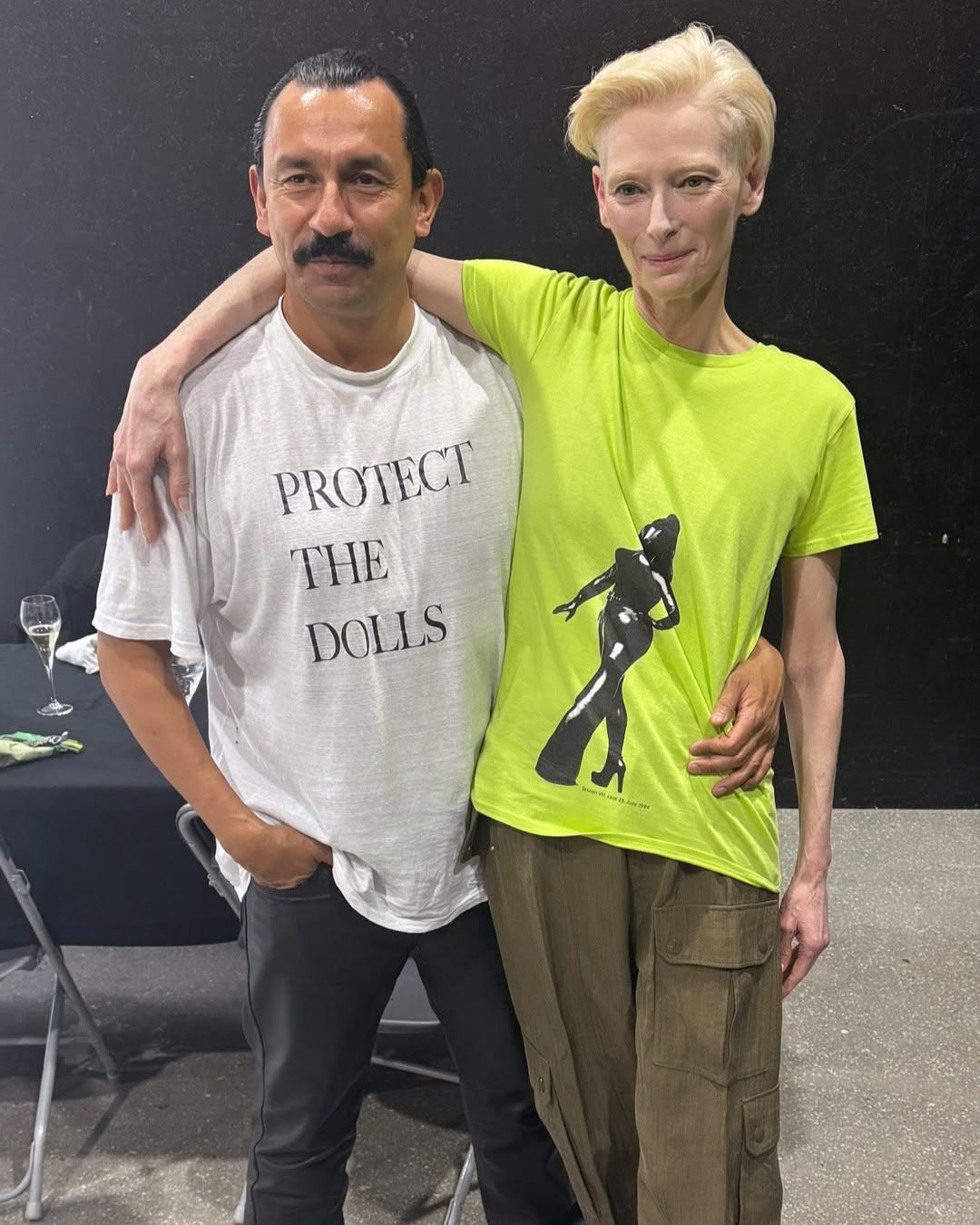
When Conner Ives strolled out for his Fall 2025 finale at London Fashion Week in a plain white tee reading “Protect the Dolls,” it looked like a quiet moment, but within hours, the T-shirt had left the confines of Fashion Week with real-world application. Tom Ford's creative director Haider Ackermann posed in his; Pedro Pascal traded his Saint Laurent suits for it at last week's Thunderbolts premiere; Australian singer Troye Sivan wore his onstage at Coachella; Addison Rae made festival rounds in hers; and Tilda Swinton even did a floor-laying selfie in one. In the blink of an eye, it's become more than a shirt, but unpaid press, pure grassroots virality, and a lifeline for a community under attack. “Protect the Dolls” is a rallying cry—a simple, urgent slogan that calls on people to stand up for trans women (and by extension, all trans people).
“I never had any idea what this would turn into,” Ives confessed on Instagram, tipping his hat to the early adopters—Haider, Pedro, Troye—and the stylists who actually bought the tees. "No press loans here! I have a fashion degree, not one in humanitarian studies,” he told Vogue before his Fall 2025 show. “I have to try to make sense of the world in the way I know how”. His instinct to channel activism through clothing paid off in both impact and proceeds, at an especially crucial time.
According to translegislation.com, in 2025, 859 anti-trans bills sought to block trans people from receiving basic healthcare, education, legal recognition, and the right to publicly exist. Of those, 83 have already been enacted into law. The Human Rights Campaign (hrc.org) notes that 26 states have passed bans on gender-affirming care for minors, affecting 118,300 trans youth aged 13–17 who now live under criminalized healthcare restrictions. At the federal level, the U.S. House approved a national ban on trans athletes in women’s school sports teams early this year—just one wedge in a wider siege on trans existence.

Meanwhile, across the Atlantic, the U.K. Supreme Court ruled this April that “woman” in the Equality Act is defined by biological sex, excluding trans women from single-sex spaces like toilets and changing rooms. All of which makes the "Protect the Dolls" tee feel less like fashion merchandise and more like a rallying cry.
Ives and his five-person studio committed 100 percent of the 75 euro retail price to Trans Lifeline, the U.S.-based, trans-led crisis hotline that offers peer-to-peer support. To date, those shirts have generated over $300,000 in donations—enough, Ives says, to power that hotline for "months on end."

Clothes are social currency—they speak our values, bind us together, and, when worn with purpose, become armor. The "Protect the Dolls" tee does just that: it turns a slogan into a battle flag, rallying allies and amplifying trans voices. As rights unravel, the shirt stitches solidarity—and that, truly, is fashion’s fiercest weapon.







